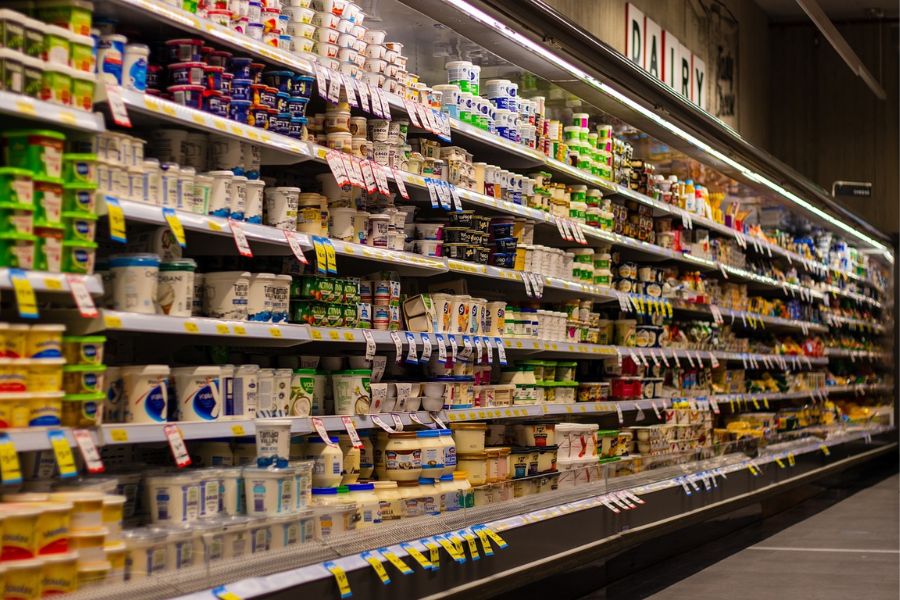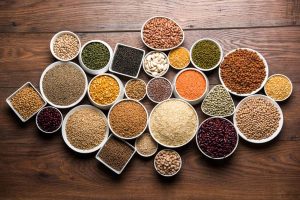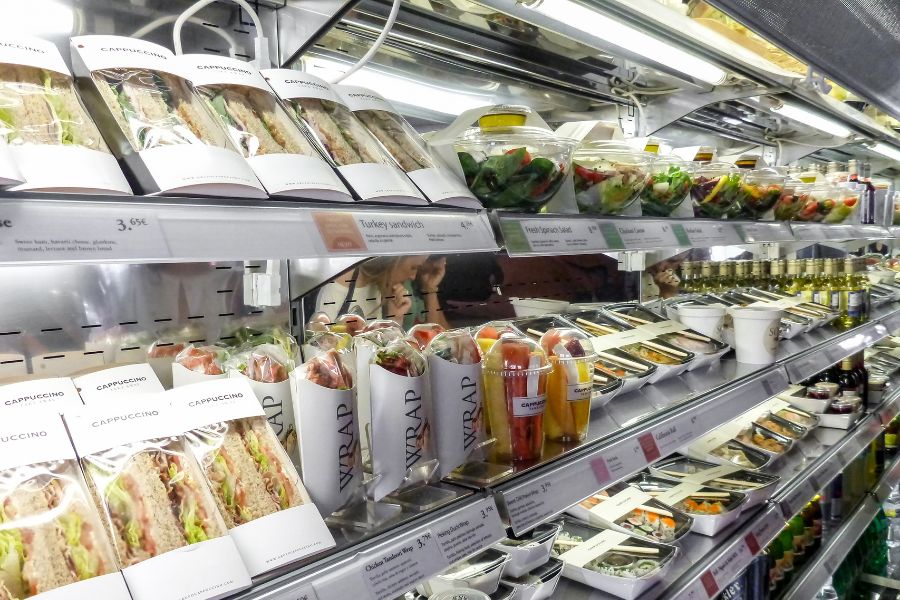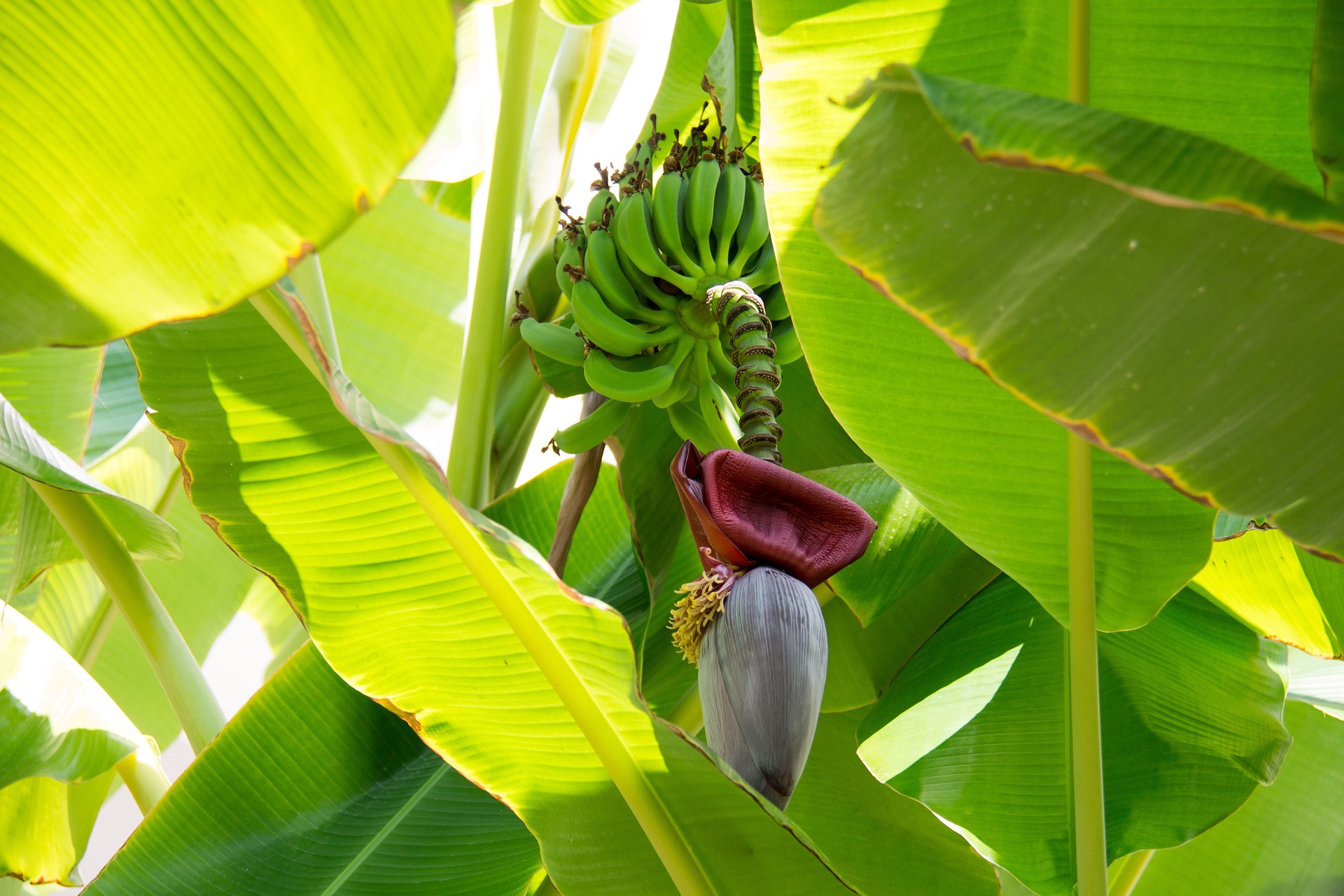Unwrapping growth: India’s food packaging industry on the upswing
The Indian F&B packaging industry is experiencing substantial growth, with market size projected to increase from US$ 33.73 billion in 2023 to US$ 46.25 billion by 2028, driven by factors like rising consumption, awareness, and government initiatives. The industry is witnessing a series of innovations, particularly in flexible packaging, such as pouches and bags, due to their adaptability and affordability. Sustainable packaging solutions are also gaining traction as public awareness grows.
The future of food packaging in India is poised for growth in tandem with the expansion of the food and beverage sector. Trends indicate a harmonious blend of sustainability, innovation, and technological advancements in the coming years.

Image source: Pixabay
Food packaging is the process of enclosing food products to keep them safe during storage, transportation, and retail sales from contamination, spoilage, damage, and pest attacks. Additionally, it shields the food from a variety of external environmental elements, including heat, light pressure, relative humidity, microbes, and others. The global food packaging market size is expected to grow from US$ 479.73 billion in 2023 to US$ 714.16 billion by 2030, growing at a CAGR of 5.85%.
The key factor driving global food packaging market share is the rising consumer demand for packaged products due to shifts in consumption habits and changing lifestyles. Moreover, the packaging industry is flourishing because it can offer vital advantages like product protection, portability, and convenience, all of which have a major impact on the industry’s global expansion due to rising demand.
India’s packaged food industry
India’s food and beverage packaging industry was valued at US$ 32 billion in 2022 and is anticipated to reach US$ 86 billion by 2029, growing at a CAGR of 14.8%, according to the All India Food Processors Association. The food and beverage industry is one of the largest users of packaging among all other industries. This dynamic industry includes various items like containers, cups, tableware, straws, bags, wraps, and boxes designed to safeguard or encase food. With the increasing urban population, tackling this challenge becomes more evident, highlighting the need for efficient food packaging to make it easier to transport, store, and consume food products.
Consumers are driving the sustainable food packaging growth trend, which involves the creation and use of packaging materials that have minimal environmental impact throughout their life cycle. It includes using eco-friendly and renewable materials, reducing waste, and mitigating the carbon footprint associated with product packaging, transportation, and disposal. The primary goal of sustainable packaging is to protect the product while simultaneously minimising the environmental impact of the packaging.
India’s food processing sector is the world’s largest sector, and its output is expected to reach $535 billion by 2025-26. Initiatives taken by this sector towards developing new packaging options are expected to boost overall market expansion. Advancements in packaging technology, such as active and smart packaging, are playing a pivotal role in shaping the food packaging market. Packaging innovations are creating new opportunities and enhancing the attractiveness of packaged foods by offering features like freshness indicators and interactive packaging experiences.
As demand for food and beverages increases, so does the need for packaging to protect and preserve them. This includes growth in the packaged food segment, ready-to-eat meals, and beverages. Other growth drivers of India’s food and beverage packaging are as follows:
- Expansion of Organised Retail: The growth of organised retail, including supermarkets and hypermarkets, has heightened the demand for packaged goods. These outlets require extensive food packaging to cater to the diverse needs of consumers, driving the overall demand for food packaging in India.
- Online Food Delivery: The fast-paced metropolitan lifestyle, rising affluence, and improved standards of living are all factors in the expanding trend of online meal delivery combined with packaged food.
- Country’s Exports: With the growth of India’s food exports, there is a parallel increase in the demand for packaging that aligns with international standards. This demand is driven by the necessity to meet global packaging requirements and ensure the quality of exported food products.
- Growth in purchasing Power: The expanding middle class, characterised by rising disposable incomes, contributes significantly to the increased spending on packaged foods. This phenomenon fuels the demand for food packaging as packaged goods become more accessible to a larger consumer base.
- Fast-Paced Lifestyle: The prevalence of busy lifestyles has led to a growing demand for convenient, pre-packaged food options. Consumers seek time-saving solutions, emphasising on the need for packaging that aligns with the requirements of on-the-go consumption.
India’s Food and Beverage Packaging Segments
The Indian food and beverage packaging industry is expanding rapidly due to the rise of organised retail and the e-commerce sector. Food packaging and beverage packaging are two segments of the Indian food and beverage packaging market. And this market is further divided into segments based on product type, applications, and material.
|
Packaging segmentation |
||
| India’s Food Packaging Market | By Material | Plastic Paperboard Metal Glass |
| By Product Type | Pouches & Bags Bottles & Jars Trays & Containers Films & Wraps Other Types of Products |
|
| By Application | Dairy Products Meat Poultry & Seafood Bakery & Confectionery Fruits & Vegetables Other Applications |
|
| India’s Beverage Packaging Market | By Material | Plastic Paperboard Metal Glass |
| By Product Type | Bottles Cans Pouches & Cartons Caps & Closures Other Types of Products |
|
| By Application | Carbonated Soft Drinks Fruit Beverages Beer & Wine Distilled Spirits Bottled Water Milk Energy & Sports Drinks Other Applications |
|
Source: Mordor Intelligence
Challenges of India’s F&B packaging
- Enforcement of Plastic Bans: The enforcement of plastic bans poses a challenge, impacting packaging choices and requiring adaptations to more sustainable alternatives.
- Pervasive Presence of E-Commerce: The widespread influence of e-commerce introduces challenges related to adapting to online platforms, ensuring efficient supply chain management, and meeting the demands of digital consumers.
- Plastic Consumption and Disposal Issues: Rising awareness of eco-friendliness emphasises the challenges related to excessive plastic consumption, inappropriate disposal practices, and the need for sustainable packaging solutions.
- Cost Management: Rising raw material costs and the need for sustainable packaging solutions pose challenges to managing costs without compromising packaging quality.
- Innovative Packaging Solutions: Developing and adopting innovative packaging solutions that meet consumer expectations, enhance shelf life, and address convenience requirements remains an ongoing challenge.
According to Arun Bhalerao, Business Development Head at Rajshree Polypack Limited, this industry is growing, but it does not reflect on consumers buying power. All these terms, like sustainable packaging and paper packaging, came after COVID hit. Producing sustainable products is not feasible commercially, as food vendors are not giving as much as it costs to produce these products. The Government of India needs to be assertive and give assurance to food manufacturers.
He further added. “Plastic is a more sustainable option in food packaging, and it is a myth that it’s not safe to use it. We are behind in reusing and recycling plastic waste. The government needs to do something for the categorization of disposing of waste so that it can be easily recycled as resources are depleting and needs are increasing.”
According to Mr. Yogesh Jhunjhunwala, owner of Neeyog Packaging, “The creation of innovative and sustainable packaging products comes at a cost. With plastic and paper being scarce resources, there is a pressing need to find new alternatives. The industry is witnessing a shift towards exploring options like flexible packaging and paper without PLA (polylactic acid and bio-sourced plastic made from plant extracts like sugarcane and corn) packaging to address the challenges of resource scarcity and environmental sustainability.”
Future outlook of India’s F&B packaging
The future of India’s food and beverage packaging industry appears promising, with several trends and factors influencing its trajectory. The industry is expected to reach significant milestones in the coming years, driven by evolving consumer preferences and socio-economic changes. The future of food and beverage packaging will involve a harmonious blend of sustainability, innovation, and technological advancements to meet the needs of a changing world.
According to Mahendra Bhatiya, Director of Dev Opus Pvt Ltd, “Indian food processing technology is evolving rapidly, driven by automation, quality control, and sustainable facilities. It holds significant potential to compete in the food packaging and branding sectors. Currently, we need to be committed to industrial growth, with a focus on innovation and sustainability.”
The rising use of eco-friendly packaging is expected to drive market growth. Furthermore, the country is witnessing a shift in government rules aimed at reducing environmental pollution. As a result, market vendors are adopting innovative and sustainable packaging.
In order to preserve food’s freshness and nutritional value, a lot of retail establishments also use packaging materials. In the coming years, there will probably be a greater demand for grocery store goods, such as frozen and chilled meals, which will support the growth of the paper bag sector.
One of the categories within flexible packaging that is increasing considerably is pouches and bags. In the food industry, flexible packaging is the most commonly used type. As one of the most effective and affordable packaging options, players in the packaged food business are choosing pouch packaging.
The future potential of the food and beverage packaging industry in India will depend on solutions that integrate technological advancements, sustainability, and consumer appeal. Meeting these demands will be crucial for the industry’s continued growth and success.













Leave a comment